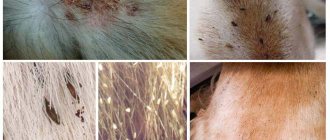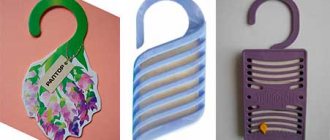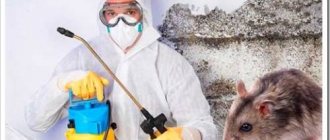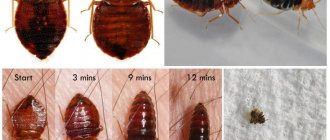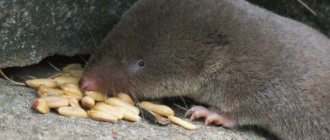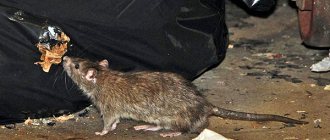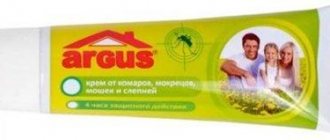Deratization is a set of measures and procedures aimed at combating the spread of rodents. The need for such work arose due to the epidemiological danger that the creatures pose. Deratization is carried out in the form of preventive measures and extermination using various methods.
There are several thousand species of rodents, which make up the majority of the planet's mammals. Due to the nature of their life activity, many species are carriers of infections or their pathogens. Rodents often live in residential premises and places of large crowds of people, which causes a strong epidemiological danger.
The most harmful species are rats and mice. These rodents live closest to humans and carry many types of dangerous diseases. They live in places such as residential buildings, warehouses and workshops, farms, industrial enterprises, underground networks, etc. Rodents also live in open areas around the house. In addition to rats and mice, voles, gray hamsters and black species of rats are dangerous, which are rarer, but no less harmful.
Rodents are carriers of the following infectious diseases dangerous to humans:
- leishmaniasis;
- encephalitis;
- worms;
- rickettsial diseases;
- fungal infections;
- Marseilles fever;
- plague.
Rodents also have a tendency to spoil food, which makes it impossible for them to continue to be consumed by humans. Pests can damage furniture, walls, books and other interior segments, which makes their presence even more harmful.
Types of deratization
The main types of deratization are:
- preventive;
- fighter.
The purpose of preventive deratization is to prevent the spread of all types of rodents indoors. The procedures will include blocking the pests' access to food and other items that they can harm.
The main type of preventive deratization is general sanitation or sanitary-hygienic. This includes generally maintaining the cleanliness of the premises, as well as eliminating possible access routes for rodents. This also includes timely cleaning and removal of garbage and waste, which is best not stored close to the building, as they strongly attract pests.
The next type of preventive deratization of premises is engineering and technical. It includes measures and procedures that must be carried out during the construction, expansion, reconstruction and repair of buildings. The purpose of sanitary prevention is also to prevent rodents from entering the premises. The types of procedures depend on the specific location and the prevalence of pests there.
During engineering and technical deratization of premises, ventilation paths are monitored. Possible access points for rodents should be closed with metal partitions. Construction must also take into account the fact that a large number of pests penetrate through basements and semi-basements. It is better to construct the walls and floors from concrete so that rodents do not have access there.
Agrotechnical prevention is the most extensive. It involves a set of operations aimed at creating a negative environment for the spread and reproduction of rodents in the area of the facility.
Extermination deratization is a set of procedures, the purpose of which is to control the number of rodents and their timely, high-quality elimination. This type of deratization work is very labor-intensive and requires special skills. Workers are searching for rodent habitats, as well as monitoring their population and movements. This is necessary for one-time and complete extermination of pests.
Methods of deratization
The choice of method for deratization of premises and territories depends on the characteristics of the area, sanitary and technical requirements and the biological characteristics of pests. There are 4 main types of exterminators: chemical, gas, mechanical and biological.
The mechanical method of deratization is the simplest and most common. It includes procedures whose purpose is to catch rodents using mechanical structures such as mice and rat traps, traps, traps, etc. The advantage of the method is that it does not pose a risk to human health and life and does not harm the environment. The technique is effectively used in small rooms. For high-quality catching, it is necessary to establish the pest population and places to install traps.
Chemical methods of extermination deratization involve the use of special reagent substances in premises. They are used to treat surfaces in possible gnawing habitats, and are also applied to baits. Rodenticides are most often used to kill pests. Their advantages are accessibility and efficiency, which allows you to destroy a threat over a large area.
The choice of chemical agent for deratization depends on the biological characteristics of the pests, as well as their population. Each type of chemical has a specific odor that attracts different groups of rodents. If selected incorrectly, pests will not feel the aroma of the product and will not taste it.
Biological extermination methods include control over natural processes in the food chain. To do this, people attract animals that, in natural conditions, hunt rodents. Cats are allowed in residential premises. In large areas and in rural areas, favorable conditions are created for the spread of predators that will hunt rodents and not interfere with the main activity.
Also, the biological method of deratization includes the use of special bacteria and microorganisms that are destructive to rodents, but do not have a negative effect on human health. They need to be added to pest baits, since the bacteria themselves do not have the ability to attract rodents. After entering the body, they quickly master and begin pathogenic activity.
The gas method of exterminating deratization is rarely used. The reason for this is the use of organophosphorus components, which have a strong toxic effect on the human body. This method is common on ships, since other methods are not applicable there.
Means and methods for exterminating rodents
There are various methods and means of deratization. To be sure to catch or destroy a rodent, chemical and physical methods of influencing animals were developed. Unfortunately, mousetraps and other traps do not always work. Rodents learn quickly and can bypass even deadly obstacles. Poison also does not guarantee the destruction of the entire population - animals gradually develop immunity. Therefore, a combination of different methods is most often used.
Chemicals
The chemical method remains the most effective due to the variety of poisons. Potent chemical-based drugs cause toxic poisoning in rodents, while remaining relatively harmless in small doses for pets and people. Selecting the “ideal” poison is the responsibility of a specialist. If you decide to carry out pest control yourself, you should carefully study the rules for working with poisons, purchase a protective suit and a respirator.
There are three chemical methods of killing rodents.
- Poisonous baits. The poison should attract animals, so it is mixed with food - porridge, grain, minced meat, bread, boiled potatoes. Deratization is also carried out with water, but not all chemical poisons dissolve in liquid. For example, some substances - zinc phosphide, zoocoumarin, ratindan - are not soluble even in alcohol, but they are perfectly masked in food. Sodium salt of zoocoumarin, fluoroacetamide, and glyfluorine liquid are suitable for poisoning water. Pollination. The poison (usually in powder form) is scattered in the habitats of pests - near burrows, on paths, in passages. Toxic particles stick to the fur and, during the cleaning process, enter the animal’s stomach. The toxic effect can be different, for example, some poisons cause oxygen starvation of tissues. The time of exposure to the body depends on the type of toxic substance. Most poisons gradually accumulate in the body, and when their dose becomes critical, the animal dies. This may take five to ten days. Fast-acting poisons kill within 12-48 hours. Carbonation. Rodent burrows are treated with poisonous gas. When inhaled, suffocation occurs and animals die. Sulfur dioxide, carbon dioxide, and methyl bromide are used for asphyxiation.
The downside of the chemical method is the need to collect corpses. The problem is that the animal can die in a place that is difficult for people to reach. A decaying rodent somewhere under the floor is not the most pleasant “decoration” of the house. Therefore, it is important to find out the habitats of rodents indoors in advance.
Traps
According to reviews, mechanical traps are the most effective and harmless to humans methods of controlling rodents if deratization is carried out independently. Modern engineers are improving old trap designs, increasing their efficiency. Traps are installed at the exits of burrows and along paths. There are three types of traps.
- Traps. Single action traps include mousetraps and arc traps. The spring mechanism is triggered when a piece of food is removed, instantly killing the victim. Structures must be clean and well camouflaged. Mousetraps are used in the house and in the surrounding area. Adhesive. Special “mousetraps” with a sticky substance inside are produced. The animal gets stuck and cannot get out. You can design a trap yourself. The main drawback is that only mice and rat pups are easily caught and stuck. Adults can escape from the sticky trap. Bolt action. The most humane traps. The mouse crawls inside for a tasty piece, and the door automatically closes. The rodent cannot get out. The disadvantage of the trap is that the pest remains alive and must be killed independently. If you put food with fast-acting poison inside, you can save yourself from unpleasant troubles. This method of fishing is good for a lone wild animal (not always a rodent) that has entered a home.
To make a mechanical trap more likely to work, it is necessary to leave it unarmed for several nights in a row. Wary rodents must become accustomed to the “safe” food structure. Only after cheese or lard begins to disappear from the trap can the mousetrap be activated.
Repellers
OZDS and other repellers are preventive methods of deratization. If a private house, warehouse, or barn is a potential home for rodents, it would be a good idea to install a repellent device or use strong-smelling substances.
The most popular are devices that produce ultrasonic waves. Sounds inaudible to the human ear induce panic and horror in small rodents. Animals prefer to avoid such places. Ultrasound also helps to wean moles from “ruling” in the garden. Special devices are produced that are conveniently inserted into the soil.
The disadvantage of this method is the impact on people and pets. Even if all the rules for deratization in the apartment are followed, due to ultrasound, residents of the house may develop prolonged headaches, dizziness, loss of strength, and depression. Animals will become restless.
Floors, baseboards, and cracks are treated with odorous substances. Chemicals can be poured into existing holes or left on cotton wool near pest habitats. This method does not always work - animals can gradually get used to the smell.
The old, effective biological method of trapping should not be ruled out. Specially trained cats and dogs effectively and quickly deal with rodents in the house. Biological measures also include spraying bacteria that are pathogenic for rodents. However, such procedures should only be carried out by a specialist.
Scope of sanitary standards
Deratization of premises is carried out in accordance with SanPin 3.5.3.3223-14. The rules indicate sanitary and epidemiological standards that must be met during the planning and implementation of deratization work, the purpose of which is to prevent the appearance of gnawing animals that pose an epidemiological danger, as well as a reduction in their population or complete destruction. The rules apply to all governing bodies, individuals and legal entities. Institutions whose task is sanitary and epidemiological control monitor compliance with the rules during the organization and implementation of deratization procedures.
Requirements for organizing and conducting deratization
Preparation and execution of deratization work should be ensured by:
- self-government bodies;
- government agencies;
- citizens;
- legal entities and individuals;
- individual entrepreneurs.
State authorities and self-government bodies are involved in carrying out deratization procedures in spring and autumn in parks and forest areas. Their task is also to carry out deratization in residential structures and buildings, for the well-being of which they are responsible. The processing also affects the surrounding area.
Legal entities are engaged in researching the condition of objects for the welfare of which they are responsible, regarding the prevalence and population of rodents, as well as monitoring the sanitary and technical condition of the premises. Their task is to determine the places where pest control work is required, including the area and quantity. Also, legal entities, as well as individual entrepreneurs, must regularly carry out preventive measures, and when carrying out extermination work, monitor their effectiveness and compliance with the standards for the use of chemical and biological treatment methods.
When organizing deratization, an inspection of objects and neighboring territories is carried out, the purpose of which is to identify the presence of rodents that pose an epidemiological danger. To do this, it is necessary to establish their type, population, characteristics and routes of movement. Next, an effective method of destruction is determined, and the object’s compliance with sanitary, technical and hygienic standards is assessed.
Types of assessment of objects that require deratization:
- Subjective. Includes determining the presence of pests in the premises, studying the damage caused to the object, as well as establishing the frequency and consistency of the appearance of pests.
- Objective. For this purpose, control measures are used, in which traps, traps and bait without poison are placed indoors. They also perform clogging of burrows and passages.
The requirement for deratization is established based on the following criteria:
- the presence of a caught pest;
- establishing traces of the presence of rodents through an objective assessment;
- visible movement of pests around the premises and surrounding areas;
- traces of rodents on baits and traps.
Frequency
The sanitary and epidemiological rules SP 3.5.3.3223-14 stipulate that preventive work to remove rodents is carried out every quarter. One to two weeks after the prevention has been carried out, the cleaned area is checked for the presence of pests. If it is possible to detect animals or traces of their vital activity, extermination deratization begins.
Focal deratization is carried out periodically in those places where rats live. Complete deratization is carried out 1-2 times a year. The territory is processed as quickly as possible. The maximum duration of the procedure is up to two weeks. If the treatment is one-time, the rodent population will decrease, only temporarily.
Measures to prevent the appearance of rodents
Engineering and technical measures aimed at protecting against the spread of rodents indoors:
- using only those structures that ensure constant tight closing of doors;
- installation of metal partitions in water drains and ventilation ducts;
- regular inspection and elimination of cracks, holes and possible rodent passages in the walls, floor and ceiling;
- sealing of communication passage areas;
- using pest-resistant material to cover the underside of walls and doors;
- installation of ultrasonic, electrical and mechanical repellers that are safe for human health;
- eliminate the possibility of rodents hiding in utility rooms, basements, attics and food storage areas;
- stopping special anti-rodent agents in their possible habitats and routes of movement.
Sanitary and hygienic requirements to prevent the appearance of rodents:
- carrying out regular activities, the purpose of which is to maintain the sanitary conditions of the premises and the surrounding area;
- regular cleaning of waste collection areas in residential buildings using detergents and disinfectants (at least once every 24 hours);
- covering areas where containers with garbage are stored with asphalt or concrete covering, as well as keeping it clean.
- use for the disposal and storage of food waste only those containers that provide a tight and hermetically sealed closure, as well as their timely cleaning;
- Regular removal of waste from local areas.
Agrotechnical deratization measures:
- regular activities aimed at eliminating weeds from areas;
- collection of fallen leaves in local areas;
- sanitary and technical cleaning of forested areas;
- regular felling in forest and forest-park areas.
What is deratization?
Deratization is a set of measures to exterminate rodents (mice and rats) that live in residential and public buildings.
Since most members of the mouse family belong to synanthropes, their life is connected with humans. Rodents try to stay close to people, this makes it easier for them to get food and find shelter for themselves and their future offspring. Rats and mice can be found in warehouses and industrial premises, in catering establishments and stores (especially grocery stores), and in residential buildings.
Deratization
Regular pest control in public places and apartment buildings is needed as a preventative measure, so it is mandatory. Individuals can also order a rodent extermination service by contacting the appropriate organization.
Classification
All rodent control measures can be divided into 2 categories:
- preventive;
- fighter.
Preventive measures are aimed primarily at creating conditions unsuitable for the existence of rats and mice, and thereby preventing their appearance.
Similar measures should be taken, for example, by management companies servicing apartment buildings. Their responsibilities include monitoring the condition of the local area, communications and common areas inside the houses. If prevention is carried out regularly and efficiently, then a rodent invasion will not occur, which means baiting will not be necessary.
Exterminatory deratization involves more radical actions aimed at destroying existing rodents. To combat them, poisons and traps are usually used.
Rules and regulations
All standards regarding the implementation of measures to exterminate mice and rats are set out in SP 3.5.3.3223-14. Sanitary rules establish the frequency of planned deratization depending on the purpose of the premises. The standards also affect the procedure for carrying out measures to exterminate rats, and also regulate measures to monitor the results of the treatment.
Preventive methods
Preventive deratization measures are aimed at creating unfavorable conditions for the living and breeding of rodents, as well as eliminating the possibility of their entry into premises.
Prevention is carried out in several areas:
- engineering and technical measures (installation of metal mesh on pipes and ventilation holes, sealing gaps and cracks in floors, ceilings, walls, installation of seals for hermetically closing doors, cementing areas for garbage containers);
- sanitary measures (regular cleaning of entrances and local areas, washing garbage receptacles and garbage chambers using special means, daily garbage removal);
- agro-forestry (removal of weeds, old stumps and plant debris in vacant lots, sanitary pruning of trees).
Cleaning the entrance
Comprehensive measures help to reliably protect the territory from the appearance of rodents.
Requirements for carrying out extermination deratization works
The need to carry out deratization extermination work at various objects, as well as in premises, in order to be cleared of pests early, is fresh traces and presence.
When planning pest extermination, the following factors are taken into account:
- sanitary and epidemiological situation in the area;
- compiling a list of common diseases in the area that are dangerous to humans and carried by rodents;
- biological and environmental characteristics of the pest species;
- type of natural focus;
- properties of rodenticidal substances necessary for extermination;
- category of the object in which processing is required.
During times of rapid migration activity of pests, barrier deratization is carried out at objects with a special epidemiological status. Natural areas are processed within recreational areas, as well as along the borders of adjacent objects.
Quality control and effectiveness of exterminator deratization is carried out based on rodent population indicators. Data is collected 30 days after the work is completed. In residential buildings and premises, an indicator of quality is the percentage of area that has been completely freed from the presence of pests. In open areas, the effectiveness of work is determined based on the percentage of rodent mortality.
Effective deratization is one that prevents the reappearance of rodents in areas and indoors for at least 3 months from the end of the elimination measures. This indicator takes into account compliance with sanitary, technical and epidemiological standards. In populated areas, the pest population should be within 3%.
Employees of organizations and institutions that carry out deratization operations must undergo regular medical examinations. Products used during rodent control activities must be approved for use on a specific type of facility.
Service contract
The procedure for the actions of the Criminal Code in matters of rodent control is enshrined in the Federal Law “On the Sanitary and Epidemiological Welfare of the Population” dated March 30, 1999 No. 52-FZ, Article 29. Having concluded an agreement for carrying out deratization measures, the service company is obliged to exercise control over the quality of the work performed .
Deratization is assessed based on the efficiency indicator based on the area of the apartment building where there are no pests in a specific period of time. If 80% or more of the areas of the house are infested with rodents, an unsatisfactory rating is given and exterminatory rodent control is required.
In addition, the quality assessment is calculated by calculating the percentage of non-contaminated premises from the entire population of serviced premises. There should be 90% or more. An additional indicator that allows us to evaluate the quality of the procedure carried out is the count of rodents that were caught per 1000 sq.m. accounting is carried out twice a year.
Sample contract for pest control
Requirements for the preparation and storage of rodenticides
In institutions that carry out deratization work, specialized storage or household premises should be allocated for the preparation of baits based on rodenticides. Preparation and packaging of products in the form of baits and other forms is carried out in a special production room. It must be equipped with a powerful supply and exhaust ventilation system. It should also have plumbing systems and access to sewerage.
To cover the walls and floors in the room for preparing and packaging rodenticides, easy-to-clean components (oil paint, tiles, linoleum, etc.) are used. Also in the room there should be special work tables, the covering of which is made of plastic, galvanized sheet or stainless steel. Premises in which toxic substances are stored must comply with all necessary sanitary and technical standards. There will be a separate exit in the production room for the preparation of means and baits. The preparation and packaging of products for deratization work outside specially equipped premises is prohibited.
Storage, accounting and distribution of deratization agents is carried out in a specialized warehouse where production procedures are prohibited. It should also have a powerful supply and exhaust ventilation system installed. Its power must ensure that the room is within the limits of possible concentrations of substances in the air of the work area. The warehouse must have a water supply and sewerage system. To store special deratization agents, metal racks are installed in warehouses. Floors and walls, as well as work areas and areas, as in production areas, should be treated with a coating that is easy to wet clean.
In warehouse and production premises that are used for deratization activities, special living areas must be equipped for personnel who carry out deratization work. In such rooms it is mandatory to have wardrobes of 2 sections intended for separate personal and work clothes of workers. Also, in living areas there must be a hot shower and sanitary facilities.
In warehouses, as well as industrial and domestic areas, there must be means to provide first aid to victims of deratization substances. There should also be instructions nearby with a list of necessary measures and rules for people whose work involves storing, packaging, preparing, transporting and using deratization substances and traps. During the preparation and manufacture of pest attractants, the use of rodenticides without the appropriate license is prohibited. Workers who carry out disinfection operations must have the required level of training, and also improve their personal qualification level once every 5 years.
Chemical deratization
This group includes methods of killing rats using toxic substances. They are used most often, they are most convenient due to the passive action of the substances themselves - the disinfector simply needs to correctly place the poisons so that the rats either find them and eat them, mistaking them for food, or ingest them against their will. Yes, yes, a rat can really be forced to eat poison. Here are examples of methods for such chemical deratization:
- Placing poisoned baits. Despite the very long history of this method, it is still quite effective today - baits are made with more and more new flavors and additives, and for the most part rats do not have time to learn to avoid them all. And those rodents that already avoid baits are easily poisoned even when they do not want to eat anything. Here's an example...
- Blockage of burrows with poisoned drying foam. It is similar to regular polyurethane foam, but rodenticides are added to it. Rat holes are clogged with such foam, and the rats, willy-nilly, have to gnaw through it in order to get out. When gnawing on the foam, the rats involuntarily swallow particles of it, and this turns out to be enough - according to our observations, in the vast majority of cases, rodents do not have time to make a way out of the hole, blown to a depth of 70 cm, and die before they gnaw through such a plug.
- Treatment of burrows with poisoned powders. These powders are small, dry and dusty; when blown into a hole, they completely cover the walls of the passage, and when a rat runs through here, it stains the fur with the powder. Later, she will definitely clean the fur (they are very clean rodents) and lick off a significant amount of powder. And then he gets poisoned.
- Gasification of a room - when all windows and doors in the house are closed, ventilation is blocked and all rooms are filled with poisonous gas. This is the most labor-intensive method that requires the most caution, but it also allows you to kill rats as quickly as possible - in less than one day. True, such aeration cannot be carried out in all premises, but only in detached private houses of a certain area.
All these methods work well together. For example, the following strategy shows good results for our disinfectors: poisoned briquettes are placed in holes and pushed as deep as possible. Then the hole is blown with powder, again, to the maximum depth, and then foamed. Rats no longer emerge from such sealed holes; they die before they can gnaw their way out.
Where pets can find bait, they are placed in special bait containers that only rats can get into. For example, in these:
However, each of these methods has certain limitations. Baits can only be placed where pets will not find them, and in some rooms they cannot be used at all. You can only blow out holes with powders and foam where there are holes, and if rats live, say, in the attic of an apartment building, or in a heating main, blowing out nothing special here will not work. And less than 3% of premises where rodent extermination is required are suitable for aeration.
However, chemical deratization is most often carried out. According to our statistics, at 82% of our facilities we use poisoned baits; about 85% of all rats that our guys destroyed over the 15 years of SanMaridez’s work died from these agents.
Case from practice
At one very large enterprise in the Leningrad region, it was necessary to destroy several thousand rats: they lived here in all underground communications, on the borders with the fields around the enterprise, in the basements of all buildings and in warehouses. During the initial deratization, our disinfectors placed 62 kg of bait here - three large boxes with briquettes. Moreover, in administrative buildings and where service dogs could find bait, they had to be placed in bait containers. 105 such containers were distributed throughout the entire territory. Over the next four weeks, cleaners collected one and a half thousand dead rats from the enterprise - nineteen bags of approximately 20 kg each. After that, we took out some of the containers, updated the baits where the rats had eaten them completely (updating took about 40 more kg of baits), and after that, every six months under the contract, we regularly update all the baits here and conduct tests with dust traps to determine the quantity rats According to our observations, from approximately 1600-1800 individuals that lived at the enterprise before the start of work, now about 30-40 rats are found there with varying regularity - most likely, these are rodents coming across the border of the territory from the fields. They can be destroyed before they begin to reproduce, and the main task of exterminating them is solved by foaming their passages under fences. This type of foaming alone along the entire border, which is about 6.5 km long, takes the entire working day of one disinfector. But, as we see, the game is worth the candle.
It is interesting that independent deratization with poisonous baits most often does not give results. Most likely, this is due to the learning ability of rats: they very quickly learn to distinguish the poisoned baits that are sold in markets and which are most often used against them. Accordingly, for effective deratization you need to constantly use more and more new baits. For our work, we purchase imported poisons that Russian rats have not yet seen, which they are not afraid of and which they happily eat.
Ordinary briquettes with rodenticide filling, which many rats no longer even approach
In addition, we make some of the baits ourselves, guided by testing of certain ingredients in the fields. Such poisons work more efficiently than store-bought ones, although they require significant hassle.
And one more important point - poisoned baits must be used correctly. They should not be taken with your hands (rats can smell human hands well and do not touch briquettes touched by people), they must be placed where they will not arouse suspicion among rodents. These small nuances often play a decisive role in the effectiveness of deratization.
Requirements for the use of control agents
During deratization operations and procedures for exterminating pests at facilities, rodenticides are used, the basis of which are anticoagulants. The work also includes physical and mechanical methods of deratization.
When performing barrier, targeted or continuous work to eliminate rodents, acute rodenticides and second generation anticoagulants are used. To increase effectiveness, they are applied together with physical methods.
The use of acute rodenticides by organizations engaged in professional deratization activities is possible only with the necessary permits, as well as sanitary, hygienic and epidemiological studies and their results. Products based on generation 1 and 2 coagulants can only be used in places where pets and children do not have access. Also, rodenticides are located away from food products and feed grains.
The locations of rodenticides should be regularly inspected during the entire period of deratization of the premises. Monitoring of the condition of the product is stopped if there are no traces of rodent action on it for more than 14 days. In such cases, the threat is considered eliminated.
It is prohibited to issue rodenticides and other similar products for carrying out deratization operations to persons who do not have professional skills and have not completed the necessary instructions and preparatory courses. In open areas, rodenticides are placed in areas where rodents are most likely to be found. In this case, it is necessary to take into account the safety of people, as well as the availability of natural shelter. The amount of funds that must be used to carry out exterminatory deratization is calculated based on the characteristics of the treatment object.
Deratization by electrical means
These methods include:
- Killing rats with electric bait traps
- Installation of baitless electric fighters in burrows or along the perimeter of a certain territory.
Electric traps are widespread and resemble containers with mechanical traps in appearance. In them, a rat, standing on the floor with one contact, tries to grab a bait hanging on a hook with another contact. As soon as she touches the hook, she immediately receives a discharge with a sufficiently high voltage and dies. The video below shows an example of how such a trap works:
Electrical circuits can be installed indoors, less often - in open areas. They shock rats when the animals try to get through them, like through a fence.
There are also electric exterminators that close the burrows like a cork. On one side of such a fighter there are electrodes that are directed into the hole. When a rat tries to get out of a hole, it examines such a plug, tries to grab it with its teeth and pull it away, receiving an electric shock and dying.
In professional practice, such electrical devices are rarely used, because they are expensive, their use is very dangerous, and their effectiveness is not superior to mechanical and chemical methods of deratization. In particular, we have never used such traps, which does not prevent us from completely exterminating rats on objects of various sizes.
Case from practice
We were called to one office center to exterminate rats in the basement. A client from one office on the ground floor complained that every 2-3 days he caught a rat in a specially purchased electric trap. We walked through the neighboring offices and found out that in another room there was the same electric trap, which also caught a rat in 2-3 days. Moreover, the disinfector was alarmed by the message that the rats are “taken out of the trap every 2-3 days.” The question is whether they will be caught every day if the trap is checked every day. The solution to the problem was simple: one glue trap was placed in the same offices, and two more were placed in the basement. Two days later, the customer called and said that four rats had already stuck to the trap in his office, they were all squeaking terribly and the employees could not work. On site, the exterminator found three more rats in the second office and three more in a trap in the basement. He threw out the traps from the offices, and instead, two more traps were installed in the basement. A week later, four more rats were caught on them, after which the captures stopped. It can be concluded that the electric traps caught the rats one at a time at the rate at which these traps were checked, since more than one rat cannot be caught in the trap. The glue traps caught several rats at a time, and they managed to catch all the pests in the room within a week.
Production control in institutions carrying out deratization work
Compliance with the necessary rules and regulations in organizations and institutions that carry out disinfection work and store and prepare rodenticides is monitored by a specially trained employee. Also, such organizations must have all the necessary licenses and accompanying documentation for the products that are used in the manufacture of baits, as well as documentation that confirms the products’ compliance with quality standards. In cases of accidents and emergencies that are associated with the possibility of human poisoning with a chemical agent, as well as contamination of objects, the environment and soil, it is required to immediately report to the relevant sanitary and technical authorities.
General sanitary measures
These procedures consist of constant monitoring of cleanliness in buildings (commercial, industrial, residential), construction sites and courtyard lands. Products are stored in appropriate containers or in an area inaccessible to pests.
An important measure of protection against small mammals is the use of optimal methods for disinfecting unusable objects and garbage by burning or composting. Including landfills are maintained, operated, and located in accordance with the standards and requirements.
The procedure for performing preventive and exterminatory deratization on certain types of objects
Regulatory documents consider the following types of objects for deratization work:
- Living spaces;
- food industry
- catering and food retail outlets;
- treatment and prophylactic complexes;
- water supply points.
In residential areas, rodents are most often present in basement areas and garbage collection points. House mice also live in apartments and houses.
Preventive measures involve closing all openings and possible pest passages with metal partitions. It is also necessary to keep stairwells clean and regularly remove and dispose of garbage and waste. Garbage bins in residential areas should be cleaned at least once every 24 hours and should not be filled more than 70%. Also indoors, it is effective to install ultrasonic and electrical devices to repel rodents.
During targeted and continuous extermination procedures in residential areas, rodenticide baits are placed in areas where the gnawing is likely to live. Also, rodenticide traps and baits are placed in passages and paths of possible movement of pests, under pieces of furniture, along walls and corners. Replenishment of baits is carried out as necessary. Extermination disinfection is coordinated with residents and carried out according to a specific schedule. Residents must be informed in advance about the timing of deratization operations and points of special danger.
At enterprises associated with the food industry, as well as in retail outlets and public catering establishments, systematic preventive deratization operations are carried out. They are performed in all rooms, as well as in areas adjacent to enterprises and institutions. Also, preventive measures include compliance with container storage standards and timely disposal of waste.
When carrying out exterminatory deratization operations at food industry points, special baits and traps made of plastic, paper or wood are used, as well as dense linings for rodenticides. Trap containers are used without additional linings or accessories.
To enhance the attraction of rodenticide traps, they are additionally treated with substances that attract rodents. These are starch, sunflower oil and flour. Grain traps and granular paraffin are also used. Additionally, food factories use traps with a sticky effect on pests, but without direct proximity to open products.
In institutions that process and store grain products, liquid products are used. In vegetable warehouses, preparative rodenticides are used, as well as DTO, mechanical structures and ultrasonic devices for repelling. Preparative substances are also used at food retail outlets and in public catering establishments to prevent pests from spreading the product into food products.
In treatment and prophylactic complexes, it is prohibited to contain medical waste in places where rodents can access it. Disposal of all waste must comply with all necessary rules and regulations. Preventive deratization measures in medical institutions are carried out regularly due to sanitary and epidemiological requirements. Particular attention is paid to possible rodent habitats such as basements, warehouses, equipment storage areas, catering units and adjacent areas.
Exterminator deratization to eliminate pests in treatment and prophylactic complexes is carried out using specialized products in the form of granules, as well as grain type. Additionally, products in the form of capsules, paraffin briquettes, gelatin components and dough-containing baits are used. Among the means of physical pest control, glue traps, ultrasonic repellent devices and crushers are used.
In treatment and prophylactic complexes, special precautions must be taken in the placement of traps and baits for rodents. Only those forms of rodenticides are used that prevent pests from spreading the product throughout the premises and their possible entry into food, bedding and medicines.
It is prohibited to place chemical rodent control agents in rooms where sick people and children are permanently located. They are also not distributed in restrooms, break rooms, study and play areas, and treatment rooms. In medical institutions, acute agents are not used and treatment is not carried out using the pollination method.
When carrying out preventive deratization in organizations and water supply services, treatment is carried out on all surfaces. Such objects are often inhabited by gray rats and house mice. The type and method of exterminating deratization in water supply services depends on the biological characteristics of the pests. Also, the product should not pose a danger to the main activities of the enterprise.
The procedure for deratization in an apartment building
If rodents appear in an apartment building, the first thing the management company does is inspect the basements and waste collection points. Then pest control specialists:
- carry out a thorough inspection of the territory of the house
- find out the approximate size of the pest population and their main habitats
- determine the condition of the house
- determine what measures are needed and to what extent
- are taking measures to exterminate
If preventive deratization measures are needed, the first step is to seal all possible passages of pests. For this purpose, ready-made or welded metal partitions are used. In addition, sanitary and epidemiological requirements require the following actions.
- Regular and timely cleaning of staircases and flights
- Daily garbage removal. If there are garbage receptacles, they should be emptied at least once a day. The filling of containers should not be more than 70%. In addition, in some cases it is possible to use ODS using various types of devices. These requirements are specified in SNiP5.3.3223-14
If mice have entered the apartment, the owners must call representatives of the management company to fix the problem. This is necessary in order to prevent pests from spreading throughout the house. The management company or homeowners association is required to keep a log of deratization work.
Sample log of pest control
Safety measures during deratization operations
Every employee involved in pest control procedures must undergo safety training. It is prohibited to allow people under 18 years of age to work with rodenticidal substances, as well as those who have not been instructed in their use or those who have medical contraindications. It is important to take a break from work for 10 minutes every 40 minutes when constantly in a room with rodenticides.
All operations are carried out in special clothing, which also includes protective gloves and shoes. If there is a danger of toxic fumes, personal protection for the eyes and respiratory tract is used. While working with rodenticides, it is prohibited to drink alcohol, smoke or eat food. After completing their work shift, employees should thoroughly wash their face, hands and other exposed body parts with a cleanser and rinse their mouth. Employees also take a hot shower at the end of the day.
The procedure for removing special clothing after working with rodenticides:
- the mittens, without removing them from the hands, are washed in a soda solution and rinsed under running water;
- safety glasses and personal respiratory protection;
- shoes and basic clothing;
- head protection
Face protection is washed in a solution of soda and calcium, as well as in soapy water. Basic clothing is shaken and hung to dry and air. Personal protective equipment can only be stored in a separate section of a personal locker, which should be located in household areas. It is prohibited to store protective clothing at home and use it as personal belongings.
Neutralization of contaminated protective equipment, as well as special working tools, packaging, equipment and transport accessories is carried out only in specialized rooms that have a sufficiently powerful supply and exhaust ventilation system. Also, during neutralization, workers must use individual specialized protective equipment.
Precautionary measures aimed at preventing the spread of toxic substances during deratization operations:
- when in contact with rodents, use special gloves, tweezers and forceps;
- exercise caution to prevent workers from being bitten by pests, as well as traces of rodent activity coming into contact with human skin;
- use means to protect the respiratory tract in places where fever and other acute infectious diseases are spread that are transmitted by air and pose a danger to human health;
- Immediately apply antiseptics to the skin in direct contact with pests or traces of their activity.
Deratization is
Rats most often live in warehouses, basements, food reserves and garbage accumulations. Pests are often found in agricultural enterprises, the food industry, and restaurants. The appearance of pests on the territory of educational and medical institutions is unacceptable.
According to GOST, the main purpose of deratization is the destruction or killing of rodents that threaten the life and health of people and cause damage to the economy.
Compliance with sanitary requirements for the implementation of deratization is mandatory for the district and city administration, SES, legal entities, and individuals. The responsible person is obliged to monitor the condition of the premises entrusted to him and take the necessary measures.
REFERENCE! The owner of a private house or apartment must report the problem to special services, because rodents spread very quickly and pose a danger to neighbors.



